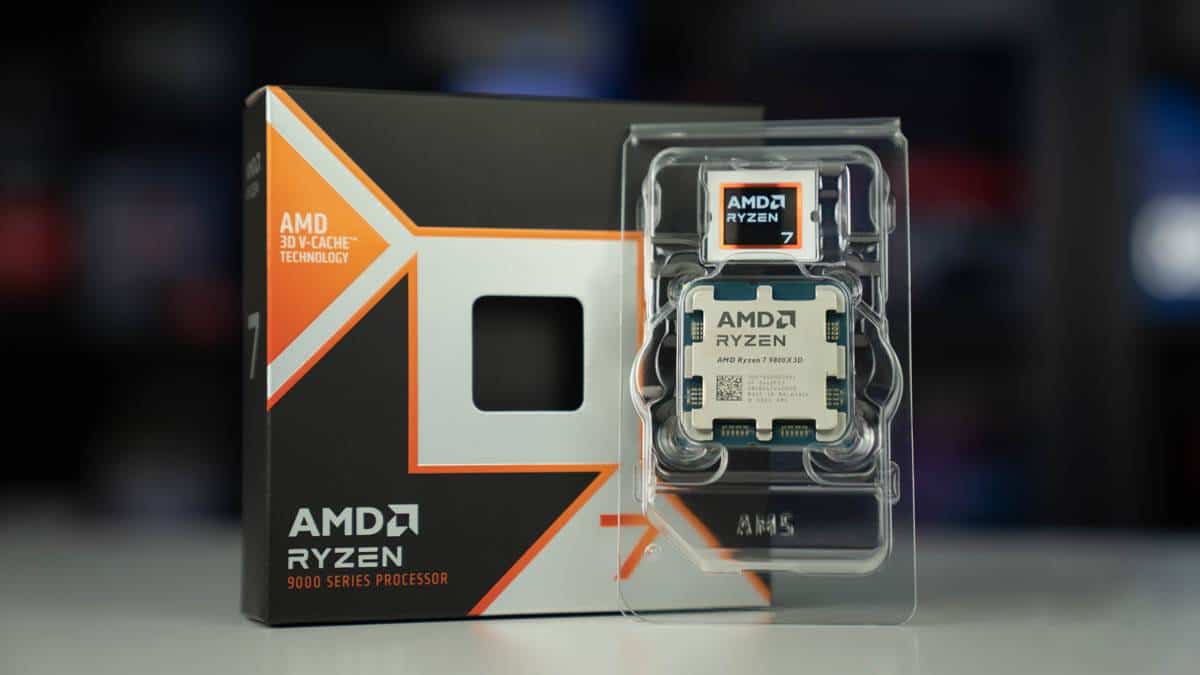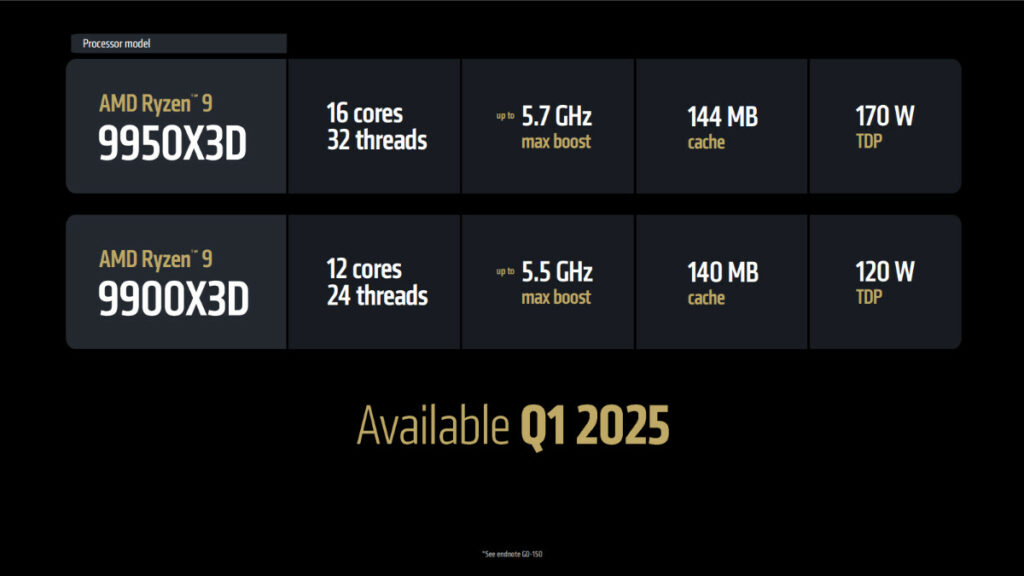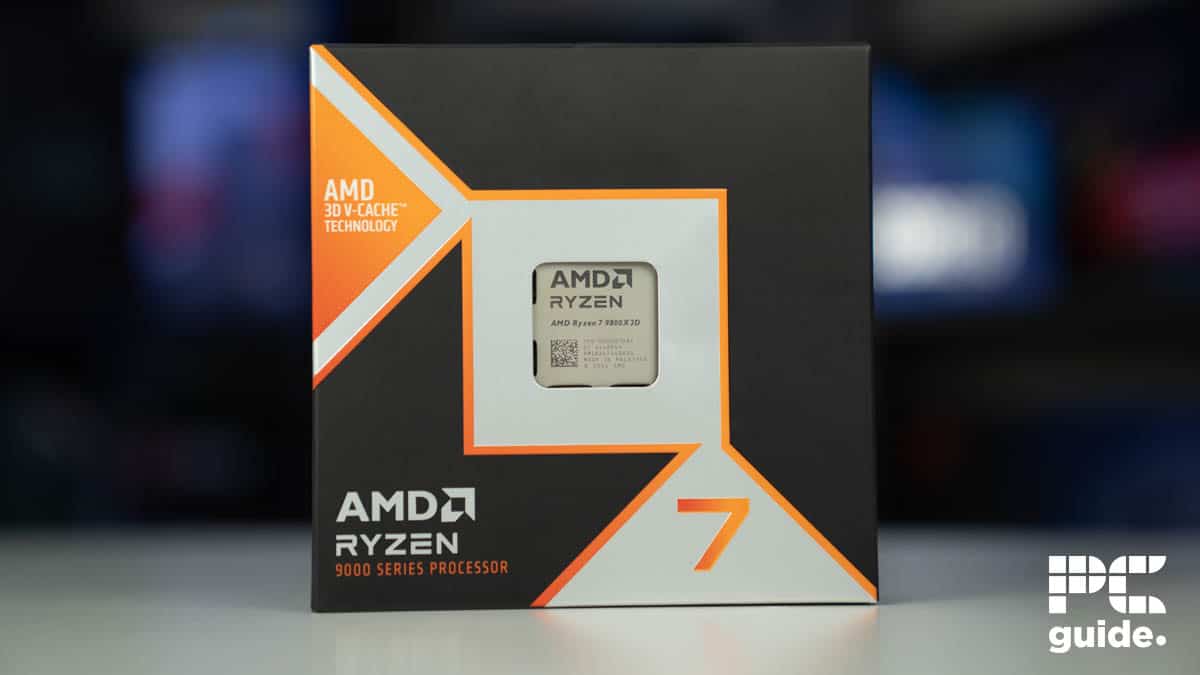Ryzen 9 9900X3D vs Ryzen 7 9800X3D specs comparison – how much do they differ?

Table of Contents
AMD has already come out swinging for CES 2025 with its announcement of the highly anticipated Ryzen 9 9900X3D, and the first thought on our mind is how it compares to the impressive Ryzen 7 9800X3D. We gave the Ryzen 7 9800X3D a glowing review last year, so the 9 9900X3D has to pull out all the stops to top it. From what we’ve learned through AMD’s presentation, its new CPU does bring a lot to the table and some significant improvements.
Although not yet released or confirmed, the 9900X3D release is said to still be on the way in Q1 of 2025, with March the likely month. Still, with no official benchmarks, we’ve been glimpses of what it has to offer thanks to a range of leaks coming out before then, such as getting an insight into the performance and pricing potential of the higher-tiered processor.
For now, ere’s a breakdown of how they stack up against each other so far, but as always, we’ll be updating this article with hands-on testing of the Ryzen 9 9900X3D as soon as we’re able to.
Spec comparison
Here, we’ll quickly overview the spec differences between the two CPUs, with a closer look at what each means for the processors. Considering they’re in the same generation, there’s not much difference between them, but there are a few variances and may offer a slight variation in some of the specs.
| Spec | Ryzen 9 9900X3D | Ryzen 7 9800X3D |
|---|---|---|
| Architecture | Zen 5 | Zen 5 |
| Socket | AM5 | AM5 |
| Process | TSMC 4nm FinFET | TSMC 4nm FinFET |
| Cores | 12 | 8 |
| Threads | 24 | 16 |
| Base clock speed | 4.4GHz | 4.7 GHz |
| Boost clock speed | Up to 5.5GHz | 5.2 GHz |
| L3 cache | (140MB total) | 96 MB |
| TDP | 120W | 120W |
| Integrated graphics | AMD Radeon Graphics | AMD Radeon Graphics |
Processor design
Being in the Ryzen 9000 generation, both processors are in the Zen 5 architecture and fit in the AM5 socket. The whole basis of the processors is the same, and comparisons are a lot easier to make between them without considerations for the motherboard or platform you use them on. Instead, it’s a direct 9900X3D vs 9800X3D choice to pick between, as all else can stay the same.
The Ryzen 9 choice gives you a higher core and thread count out of the two options. It increases to 12 cores and 24 threads, increasing over the Ryzen 7 by four cores and eight threads. This makes it a more workload-focused option, one capable of running multi-threaded processes much better and more efficiently than the 9800X3D, making it a better choice for the likes of renders and similar works, not just gaming.
As both are on the AM5 platform with longevity in mind for AMD, you can also expect these to be supported for a few years. Plus, with the redesign of the X3D in the 9000 series, there’s not as much detriment between them as non-X3D CPUs, so you can be even more certain of choosing these top-tier processors.

Clock speeds
As for the clock speeds, the core quickly processes the data and gets it through the pipelines with the stuff you want. This is where X3D in previous years couldn’t clock as high and restricted even overclocking potential, so now we get a whole new level of performance to enjoy.
Between the two, the 9900X3D has a lower base clock, targeting 300MHz lower and reaching just 4.4GHz compared to the 9800X3D. On the other hand, by default, it can get a higher boost clock, with a reported 5.5GHz boost clock, 300MHz, in contrast to the Ryzen 5 CPU. That’s without any more boosting that you could do by hand, but that will come once the newer one actually releases and can be pushed.
Cache
AMD hasn’t been clear on the cache breakdown of the newer 9900X3D vs. the 9800X3D; we know it comes with 140MB. Meanwhile, the 9800X3D has around 105MB, while the 3D cache takes up 96MB of that much. So, it could be possible that the 9900X3D could have a similar number as its predecessor with 128MB of L3 cache.
This is handy for boosting the performance we see the AMD 3D cache achieve. Being capable of buffering more data closest to the processor core, it allows it to get all that data through more quickly and boost FPS in comparison to the non-X3D CPUs even in the same generation.
TDP
When it comes to how much power these processors are going to be drawing, AMD has specced them with the same Wattage. Suggesting a 120W Thermal Design Power for both, so choosing either of them will require a similar power plan for whatever you’re planning to do with them.
However, with overclocking and any motherboard boosts, that can easily rise above this rating. So don’t be surprised if they go above the 120W power requirement.

Performance difference leaks
While we wait for the reviews to pop up with benchmarks to crop up and before we get our hands on them, there have been some performance leaks for the newer CPUs. There, we get a glimpse of what it has to offer and can compare it to the 9800X3D.
In particular, we see the 9900X3D’s Geekbench scores, where it manages to get 3,274 in single-core and 19,227 in multi-core scenarios. On the other hand, the 9800X3D gets 3,204 and 18,838, respectively, which means it falls behind by just 2%, so it’s not exactly a big difference. Although we can’t rely on just this one leak and look forward to seeing its full potential across the board.
Price difference expectations
For now, AMD is holding back the price of the 9900X3D, and we won’t know the final price until its closer release date. It might come similar to the 7900X3D price that had an MSRP of $599. But we wouldn’t be surprised if it increases over the previous gen, like the 9800X3D.
That CPU has a price of $479, so you can expect quite a higher price difference of over $100 if the price follows suit previously. So, it might be quite the detractor if you’re trying to build out a PC on a bit of a budget. However, considering the 98000X3D stock has been a bit of an issue, as you might not even get a choice in which to pick, and you just go for the one that’s available.
Leaked pricing from Newegg suggests that the 9900X3D will remain the same price. That means it will cost $120/20% more than the 9800X3D, making it just that bit more expensive to fit into your budget.
Which CPU to pick?
When deciding between the 9900X3D and 9800X3D, there’s a pick between them, depending primarily on your use case. If you’re just gaming and don’t need the extra cores that you won’t use, then the 9800X3D is the better pick. That way, you can save some money and invest that into a better GPU or the rest of the system to complement the chip.
On the other hand, if you do more productivity tasks that are used for more cores and threads, then the 9900X3D is the better option. Allowing for better performance in those activities saves you time in the long run, which can be worth the extra cost of buying the CPU. So, for most people, the 9800X3D is a sufficient option.

